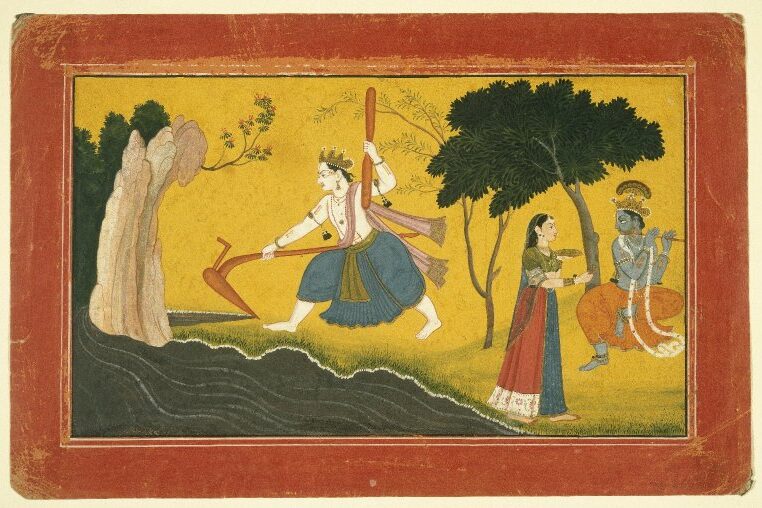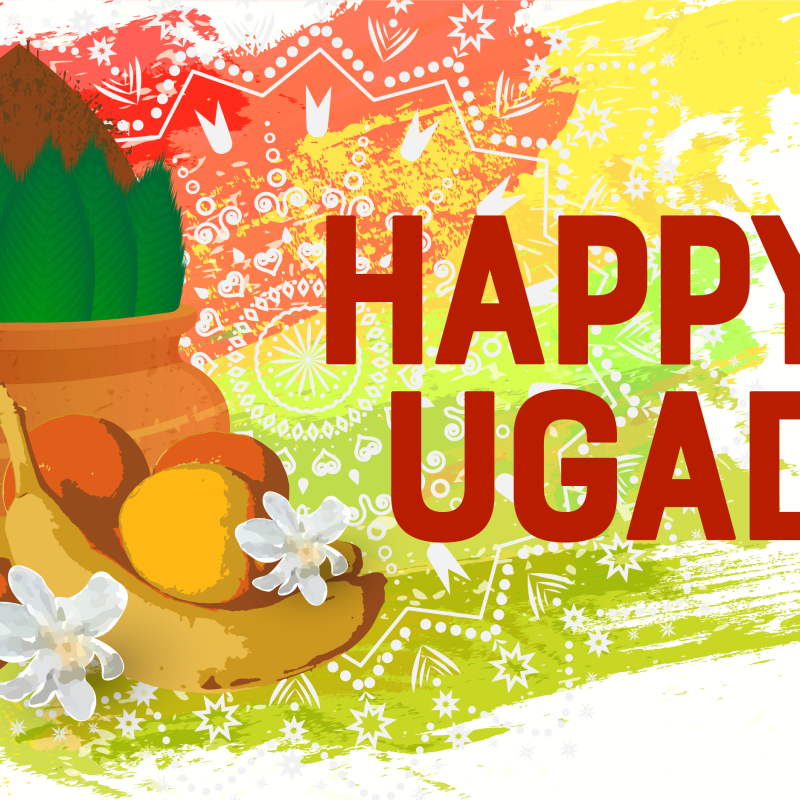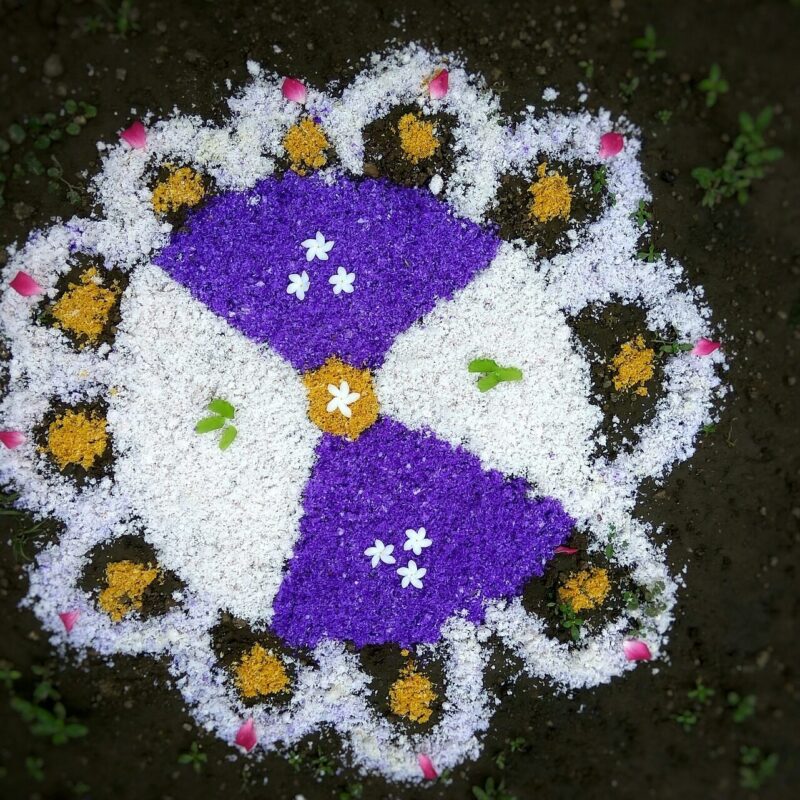
1) He is Krishna’s older brother
Known by devotees for a wide range of remarkable qualities, feats, pastimes, and portrayals, Balarama is an extraordinary personality in Hinduism, whose significance is of profound import. Though this significance sometimes gets overshadowed by that of Krishna’s, who is amongst Hinduism’s most popular deities, it is, ironically, in connection to Krishna, that appreciation of Balarama can be most naturally unfurled.
While recognized by many as an avatar of Vishnu (a form of the Divine known as the “Preserver and Protector of the Universe”), Krishna is conveyed in the Bhagavata Purana — the most prominent text detailing his life and pastimes — as the ultimate form and source of the Divine from which all of creation, including Vishnu, has expanded.
Described in the Purana as his first expansion, Balarama is an all-powerful manifestation of Krishna’s potency known as sat or “eternity,” upon whose bala, or strength, existence is endlessly sustained.
Supporting all existence for the primary purpose of facilitating the development of Krishna’s relationship with every being through bhakti, or loving devotion, Balarama’s position is of an older brother, whose constant aim is to look out for the happiness of his younger sibling.
2) He is known as adi guru
For those following traditions in which attaining sincere love and devotion for Krishna is the highest goal, Balarama is considered an especially integral figure in the process of cultivating such love.
Though Krishna is open and available to all who desire to have a relationship with him, and various Hindu texts provide different practices by which devotees can endeavor to deepen their connection with him, one cannot simply manufacture a relationship with Krishna, or any other person for that matter, by some mechanical process.
Real love for a person grows by understanding that person’s heart, and the best way to gain access to a person’s heart is through the heart of someone who is already dear to that person.
Being Krishna’s eternal brother and companion, Balarama is amongst the most dear to Krishna, and because his constant aim is to fulfill Krishna’s desire by nurturing loving relationships between him and every being in existence, Balarama is the perfect medium through which to approach Krishna.
Thus often depicted carrying a plow, symbolizing the role he plays in cultivating devotees’ hearts so they can become fertile for the seed of bhakti to grow, Balarama is called adi guru, whose compassion flows through and empowers other gurus also striving to cultivate bhakti in devotees’ hearts.
3) He is a symbol of strength
As one of the central figures of the Mahabharata (the world’s longest epic), Bhima is highlighted throughout the narrative for his immense physical power, so much so that it’s easy to think he is the finest emblem of strength the story has to offer.
Balarama, however, whose name literally has the Sanskrit word for “strength” in it, by whose potency, as already mentioned, existence is said to be sustained, is a unique symbol of strength within the Mahabharata, whose profound yet effortless power is so undeniable, Bhima himself accepted him as his guru in gada yudha, or the art of mace fighting.
While various displays of his seamless might are conveyed throughout Hindu texts, an especially staggering example can be found in the story of when Balarama traveled to the city of Hastinapura to rescue his nephew, Samba.
Imprisoned by Duryodhana, the city’s crowned prince, after attempting to marry his daughter Lakshmana without his consent, Samba’s capture inflamed the Yadus (the dynasty to which Samba belonged) who began preparing to fight the Kurus (the dynasty to which Duryodhana belonged) for the disdainful act.
Wanting to avoid a war, Balarama, who was also Duryodhana’s guru in gada yudha, cooled the tempers of the Yadu warriors and traveled to Hastinapura, hoping to secure the release of his nephew through diplomacy.
Though Duryodhana and his brothers initially received Balarama respectfully upon his arrival, their attitudes swiftly turned sour when he insisted they release Samba from captivity. Incensed by Balarama’s audacity, they proceeded to deride him and the Yadus, saying they had only prospered until then by the Kurus’ grace, and that they were a “lowly shoe” that now wanted “to climb the head that bears the royal crown.” Hence rejecting his request in a most contemptuous fashion, they turned their backs on him and returned to their homes, leaving him without the due courtesy of another word.
Enraged by their arrogance, Balarama, who had traveled to the city seeking peace but was instead dealt insults and impertinence, picked up his plow. If they wouldn’t respect his words, then perhaps they would listen to the language of another kind: force.
Thus declaring furiously he was going to rid the world of the Kurus, he plunged his weapon into the ground, and with an unfathomable power, began dragging Hastinapura towards the Ganges, intending to cast it into the water.
As their city moved like a tumbling raft towards its impending submersion, the terrified Kurus immediately released Samba and placed him, along with Lakshmana, in front of Balarama, before joining their hands in supplication, begging the angered Yadu to forgive them for their offenses.
Pleased by their new-found sense of humility, Balarama’s anger instantly dissolved, as he promptly appeased them and quit dragging the city. Existing, after all, for the chief purpose of cultivating loving devotion in others, his strength is never a manifestation of hatred or envy, but a tool of love, meant for the betterment of all.
4) He is considered an especially compassionate aspect of the Divine
Cultivating the seed of bhakti in a person is no simple task, especially when the growth of that seed is impeded by the weeds of self-centeredness, like lust, envy, greed, vanity, etc. A guru’s true compassion, therefore, is exhibited not only by his willingness to help nurture this seed, but by his determination to do so despite the obstruction of these weeds.
As adi guru, from whose extraordinary and limitless compassion other gurus are inspired, Balarama is the consummate example of such indiscriminate magnanimity, discerning the seed of bhakti even in those whose weeds make it almost impossible to do so. In the Mahabharata, for example, Balarama is known for having shown a great deal of affection to Duryodhana (widely regarded as the antagonist of the epic), even after Duryodhana employed a myriad of dishonorable means in various attempts to kill Balarama’s cousins called the Pandavas.
And when the conflict between Duryodhana and the Pandavas escalated into an all-out war in which most of the story’s great kings and armies participated, Balarama, unwilling to choose sides due to his love for both, decided instead to spend the duration of the war on pilgrimage.
In Gaudiya Vaishnavism, a tradition where developing bhakti for Krishna is the highest goal, Balarama is believed to have expressed his unfathomable compassion even further in a particularly soft-hearted form known as Nityananda, who lived on the earth roughly 500 years ago.
Engulfed in Balarama’s mood of tirelessly cultivating bhakti in others, Nityananda would regularly spend entire days finding and meeting new people to share the tradition of sincere and selfless devotion, regardless of who they were or where they came from.
One day Nityananda and his friend Haridas came across two men on the street who were making a scene, shouting tumultuously in an aggressive and clearly intoxicated state. Inquiring from others, they learned the men were brothers named Jagai and Madhai, who were infamous as cheaters, plunderers, and drunkards, among other things. Described as highly unstable and violent, Nityananda and Haridas were implored not to approach them.
Caring more for others happiness through the development of bhakti than his own well-being, however, Nityananda ignored the advice and, with Haridas by his side, went up to the brothers, requesting them, with deep earnestness, to give up their deplorable habits.
Furious at Nityananda’s candid speech, the brothers immediately tried to attack the two saints who, managing to avoid harm, turned and fled from the scene. Though he had barely escaped with his life, Nityananda was determined to engage in a dialogue with the brothers, and so the next day he went to see them again.
Incredulous that he dared approach them for a second time, Madhai, upon seeing Nityananda, picked up a piece of earthen pot and, in a bout of rage, struck it on Nityananda’s head, drawing blood at the point of contact. Fearing for the saint’s life, those witnessing the incident immediately sent word to Chaitanya — an associate of Nityananda regarded by Gaudiya Vaishnavas as having been Krishna himself.
On hearing the news, Chaitanya immediately rushed to the scene, invoking through his divine potency the Sudarshana Chakra, a mystical disc-like weapon with which he planned to defend his spiritual brother.
But when Nityananda saw the inflamed Chaitanya advance on Jagai and Madhai, who could do nothing in the wake of the disc-wielder’s immense power and anger, he immediately diffused the situation, stepping in front of those who had harmed him. Beseeching Chaitanya to forget his anger, Nityananda said the brothers, despite their actions, should be forgiven.
Overwhelmed by Nityananda’s selflessness, Chaitanya laid down his weapon and embraced Jagai who, along with Madhai, felt immense shame, thus determining to change the quality of their characters from that point forward. Such is the potency of Balarama’s mood of compassion, that it can disarm even the most powerful, and transform those who have the most foul of intentions.
5) His birth is celebrated on Balarama Jayanti
While it’s true, as illustrated in the story of Samba and the Kurus, the power of Balarama’s physical prowess can motivate people to change their outward behavior, it’s clear, as illustrated in the story of Jagai and Madhai, Balarama’s true power lies in his ability to change people’s hearts.
Thus fueled by his limitless compassion, more than being a symbol of physical strength, Balarama is first and foremost a symbol of spiritual strength, always vigilant in his primary goal of bringing people happiness, purpose, and ultimate fulfillment in loving devotion.
And because birthdays in Hindu culture are actually a time for giving more so than receiving, Balarama Jayanti is an extremely auspicious day in which Balarama’s charitable mood reaches new heights. If devotees, therefore, pray to him with even the slightest of sincerity, he is guaranteed to confer the greatest of blessings, instilling in them the stamina and strength required to become successful on the path of bhakti.
If you enjoyed this piece, then you may also be interested in reading “5 things to know about Radharani”







































